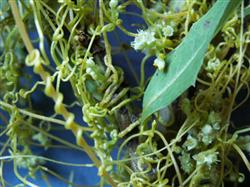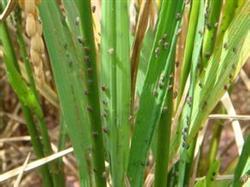Control of three main diseases of soybean

Root rot, Sclerotinia sclerotiorum and gray leaf spot are the three main diseases of soybean, and timely measures should be taken to control them. Root rot disease: the disease can occur in the whole growth period of soybean. At the beginning of the disease, dark brown spots appeared at the base of the stem, and spread upward to the lower lateral branches, the pith of the diseased stem turned brown, the base of the petiole constricted, and the leaves drooped. Chemical control can be used with seed weight 0.3% 0.4% of 58% mycoplasma manganese zinc or 72% Kelou seed dressing. Sclerotinia sclerotiorum: the disease began in late July. Brown disease spot appeared on the stem at the beginning of the disease, and then white flocs and white particles appeared on the disease spot, and finally the white particles turned black. Black sclerotia could be seen in the diseased stem. Drug control can be used 50% Sukeling 1000 times liquid, or 40% sclerotia net 1000 times liquid, or 50% methyl topiramate 500x solution spray. Gray leaf spot: the disease began in the first and middle of June and reached its peak in mid-July. The disease occurred seriously in high temperature and rainy weather from July to August. It mainly harms the leaves, and in serious cases, the leaves are covered with disease spots, and the leaves fall off prematurely, resulting in a serious reduction in yield. In addition to dressing seeds with 70% dimethazone or 50% thiram before sowing, more than 40% carbendazim should be sprayed with 100 grams of carbendazim and 30 kg of water per mu during soybean flowering and pod period.
- Prev

Identification and Control of Rice Diseases and insect pests (2)
Rice brown planthopper is also known as brown planthopper, commonly known as Ascaris lumbricoides, soft shell Ascaris, Ascaris, midges. Scientific name Nilaparvatalugens (Stdl) Homoptera, Homoptera. Brown planthopper (Nilaparvata lugens) is one of the main rice pests in China.
- Next

Symptoms and Control of Peanut net spot
1. The cause of iron deficiency in peanut peanut is one of the crops sensitive to iron. Although iron is not a component of chlorophyll, it is an indispensable condition for the synthesis of chlorophyll. It is a component of cytochrome oxidase and peroxidase related to respiration, and participates in the redox process in plants. Is.
Related
- The first cup of black tea in spring, the flavor and history of tea gardens in Kenya, Africa
- The computer can not only choose potatoes, but also grow tea rice. AI will grow winter oolong tea champion.
- It is not only the inflated tea bitten by insects, but also engraved with the four seasons tea in Beipu.
- The Oriental Beauty Tea Festival in Zhuxian County takes the stage at the weekend to experience the plus-size feast of oil tea.
- & quot; Oriental Beauty Tea & Exploration of Emei in Hsinchu, the hometown of quot;
- The new variety of strawberry "Tainong 1" dessert is the first choice with mellow aroma. Crimson gorgeous
- History of Tea in Taiwan: from Wild Inner Mountain to Export Tea Garden
- Two types of Taiwan Oriental Beauty Black Tea won the British three-Star Award for Childhood Tea Xiang Zhang Jiaqi changed from pilot to champion tea maker.
- Banana species and varieties: the planting history of Taiwan Xianren banana and dwarf banana is long, is banana disease resistant?
- Coffee planting Technology: Qianjie Coffee from Seedling to harvesting

